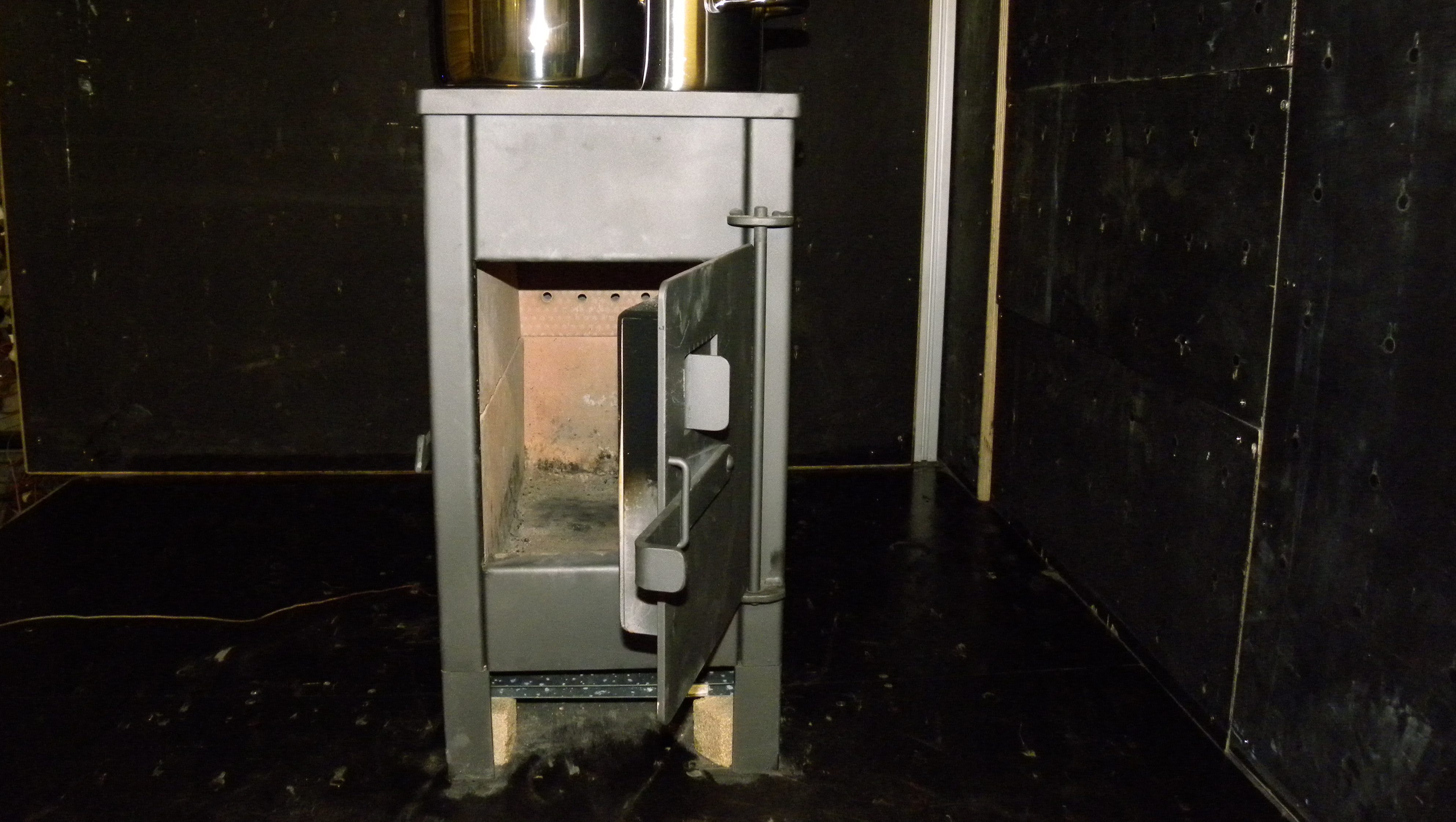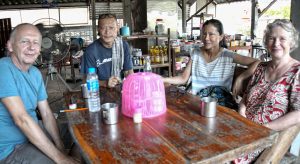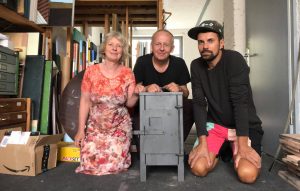Social Plastic“ is a Community Art Project by Camping Akademie e.V., Germany,
in cooperation with Baan Noorg Collaborative Arts & Culture, Thailand and Jatiwangi Art Factory, Indonesia.
„Social Plastic“ raises the question of a relationship of dealing with plastic waste with social and cultural structures: how can we develop a new awareness in dealing with our waste? The project asks for meaningful avoidance and utilization strategies. Are there any traditional packaging materials that can be used? Can the manufacturers be obliged to act? What ideas evolve, are there feasible realistic solutions? In the spirit of Joseph Beuys concept of „social plastic“ the project „Social Plastic“ is an experiment on collective art production and subcultural / social processes.
PLASTIC – Roland Barthes, 1957
Despite having names of Greek shepherds (Polystyrene, Polyvinyl, Polyethylene), plastic, the products ofwhich have just been gathered in an exhibition, is in essence the stuff of alchemy. At the entrance of the stand, the public waits in a long queue in order to witness the accomplishment of the magical operation par excellence: the transmutation of matter. An ideally-shaped machine, tabulated and oblong (a shape well suited to suggest the secret of an itinerary) effortlessly draws, out of a heap of greenish crystals, shiny and fluted dressing-room tidies. At one end, raw, telluric matter, at the other, the finished, human object; and between these two extremes, nothing; nothing but a transit, hardly watched over by an attendant in a cloth cap, half-god, half- robot.
So, more than a substance, plastic is the very idea of its infinite transformation; as its everyday name indicates, it is ubiquity made visible. And it is this, in fact. which makes it a miraculous substance: a miracle is always a sudden transformation of nature. Plastic remains impregnated throughout with this wonder: it is less a thing than the trace of a movement.
And as the movement here is almost infinite, transforming the original crystals into a multitude of more and more startling objects, plastic is, all told, a spectacle to be deciphered: the very spectacle of its end- products. At the sight of each terminal form (suitcase, brush, car-body, toy, fabric, tube, basin or paper), the mind does not cease from considering the original matter as an enigma. This is because the quick-change artistry of plastic is absolute: it can become buckets as well as jewels. Hence a perpetual amazement, the reverie of man at the sight of the proliferating forms of matter, and the connection she detects between the singular of the origin and the plural of the effects. And this amaze men its a pleasurable one, since the scope of the transformations gives man the measure of his power.and since the very itinerary of plastic gives him the euphoria of prestigious free-wheeling through Nature.
But the price to be paid for this success is that plastic, sublimated as movement, hardly exists as substance. Its reality is a negative one: neither hard nor deep, it must be content with a ’substantial‘ attribute which is neutral in spite of its utilitarian advantages: resistance, a state which merely means an absence of yielding. In the hierarchy of the major poetic substances, it figures as a disgraced material, lost between the effusiveness of rubber and the flat hardness of metal; it embodies none of the genuine produce of the mineral world: foam, fibres, strata. It is a ’shaped‘ substance: what ever its final state, plastic keeps a flocculent appearance, something opaque, creamy and curdled, something powerless ever to achieve the triumphant smoothness of Nature. But what best reveals it for what it is is the sound it gives, at once hollow and flat; its noise is its undoing, as are its colours, for it seems capable of retaining only the most chemical-looking ones. Of yellow, red and green, it keeps only the aggressive quality, and uses them as mere names, being able to display only concepts of colour.
The fashion for plastic highlights an evolution in the myth of imitation‘ materials. It is well known that their use is historically bourgeois in origin (the first vestimentary postiches date back to the rise of capitalism). But until now imitation material shave always indicated pretension o they belonged to the world of appearances, not to that of actual use; they aimed at reproducing cheaply the rarest substances, diamonds, silk, feathers, furs, silver, all the luxurious brilliance of the world. Plastic has climbed down, it is a household material. It is the first magical substance which consents to be prosaic. But it is precisely because this prosaic character is a triumphant reason for its existence: for the first time, artifice aims at something common, not rare.
And as an immediate consequence, the age-old function of nature is modified: it is no longer the Idea, the pure Substance to be regained or imitated: an artifical Matter, more bountiful than‘ all the natural deposits, is about to replace her, and to determine the very invention of forms. A luxurious object is still of this earth, it still recalls, albeit in a precious mode, its mineral or animal origin, the natural the me of which it is but one actualization. Plastic is wholly swallowed up in the fact of being used: ultimately, objects will be invented for the sole pleasure of using them. The hierarchy of substances is abolished: a single one replaces them all: the whole world can be plasticized, and even life itself since, we are told, they are beginning to make plastic aortas.
PLASTIC – Roland Barthes, 1957
Trotz seiner griechischen Hirtennamen (Polystyren, Phänoplast, Polyvinyl, Polyäthylen) ist das Plastik, dessen gesammelte Produkte jüngst auf einer Messe ausgestellt wurden, in erster Linie eine alchimistische Substanz. Am Halleneingang steht das Publikum geduldig Schlange, um Zeuge der magischen Operation par excellence zu werden: der Verwandlung der Materie. Eine ideale Maschine, röhrenförmig und länglich (die geeignete Form, um das Geheimnis eines zurückgelegten Weges zu zeigen), gewinnt mühelos aus einem Haufen grünlicher Kristalle glänzende, geriffelte Ablageschalen. Auf der einen Seite der tellurische Rohstoff, auf der anderen der perfekte, vom Menschen gemachte Gegenstand. Zwischen diesen beiden Extremen nichts; nichts als eine Wegstrecke, überwacht von einem einzigen Angestellten mit Schirmmütze: halb Gott, halb Roboter.
So ist Plastik nicht nur eine Substanz, es ist die Idee ihrer unendlichen Transformation; es ist, wie sein gewöhnlicher Name sagt, die sichtbar gemachte Allgegenwart. Übrigens ist es gerade deshalb ein wunderbarer Stoff: Ein Wunder ist immer eine plötzliche Transformation der Natur. Von diesem Staunen bleibt das Plastik durch und durch geprägt: Es ist weniger Objekt als Spur einer Bewegung.
Und da diese Bewegung hier fast unendlich ist und die ursprünglichen Kristalle in eine Vielzahl immer erstaunlicherer Gegenstände verwandelt, ist Plastik im Grunde ein Schauspiel, das entziffert werden muß: das seiner Endprodukte. Von jeder endgültigen Form aus betrachtet (Koffer, Bürste, Autokarosserie, Spielzeug, Stoff, Röhre, Schüssel oder Papier), stellt sich die rohe Materie dem Geist fortwährend als Rebus dar. Das beruht darauf, daß der Fregolismus des Plastiks total ist:
Man kann daraus ebensogut Eimer wie Schmuckstücke formen. Daher ein ständiges Erstaunen, das Träumen des Menschen vor dem Wuchern der Materie, vor den Verbindungen, die er zwischen der Einzahl des Ursprungs und der Vielzahl der Wirkungen entdeckt. Dieses Erstaunen ist übrigens ein freudiges, weil der Mensch am Ausmaß dieser Verwandlungen seine Macht ermißt und weil der Weg, den das Plastik dabei nimmt, ihm das beglückende Gefühl verleiht, virtuos durch die Natur zu gleiten.
Doch dieser Erfolg hat seinen Preis. Er besteht darin, daß Plastik, zur Bewegung sublimiert, kaum noch als Substanz existiert. Seine Beschaffenheit ist negativ: Weder hart noch tief, muß es sich trotz seiner praktischen Vorzüge mit einer neutralen Substanzeigenschaft begnügen: der Haltbarkeit, einem Zustand, der nichts weiter bedeutet, als daß es nicht nachgibt. In der poetischen Ordnung der großen Substanzen hat dieses Material einen undankbaren Platz, verloren zwischen der Dehnbarkeit von Gummi und der kategorischen Härte von Metall; es verkörpert keines der echten Hervorbringungen des Mineralienreichs – Schaum, Fasern, Schichten. Es ist geronnene Substanz; welchen Zustand es auch annimmt, das Plastik behält ein flockiges Aussehen, etwas Trübes, Sämiges und Erstarrtes, eine Unfähigkeit, jemals die triumphale Glätte der Natur zu erreichen. Doch am verräterischsten ist der hohle und zugleich nichtssagende Ton, den es von sich gibt; sein Geräusch ist vernichtend, wie auch die Farben, denn es scheint nur die chemischsten unter ihnen binden zu können: Gelb, Rot, Grün; es behält nur ihre Aggressivität, verwendet sie nur als Namen, vermag nur Begriffe von Farben vorzuführen.
Die Plastikmode unterstreicht eine Entwicklung im Mythos der Imitation. Bekanntlich ist die Nachahmung, historisch gesehen, eine Usance des Bürgertums (die ersten Imitationen bei der Kleidung stammen aus der Frühzeit des Kapitalismus). Doch bislang hatten Imitationen etwas Großspuriges, gehörten zur Welt des Scheins, nicht des Gebrauchs; sie waren bestrebt, zu geringeren Kosten die erlesensten Substanzen zu reproduzieren: Diamant, Seide, Feder, Pelz, Silber, den ganzen luxuriösen Glanz der Welt. Das Plastik schraubt solche Ansprüche zurück, es ist eine Substanz für den Haushalt. Es ist die erste magische Materie, die sich damit begnügt, prosaisch zu sein; doch sie tut es gerade deshalb, weil diese Prosaik die triumphale Rechtfertigung ihrer Existenz ist: Zum ersten Mal zielt das Künstliche aufs Gewöhnliche, nicht auf das Seltene. Und zugleich ändert sich die angestammte Funktion der Natur; sie ist nicht mehr die Idee, die reine Substanz, die es wiederzufinden oder nachzuahmen gilt; eine künstliche Materie, ein Kunst-Stoff, reicher als alle natürlichen Vorkommen der Welt, wird an ihre Stelle treten und sogar die Erfindung der Formen bestimmen. Ein Luxusobjekt ist immer erdhaft, erinnert stets auf kostbare Weise an seinen mineralischen oder animalischen Ursprung, das natürliche Thema, das es nur aktualisiert. Plastik geht ganz in seinem Gebrauch auf: Im Grenzfall wird man Gegenstände erfinden allein aus dem Vergnügen, sie zu verwenden. Die Hierarchie der Substanzen ist abgeschafft, eine einzige ersetzt sie alle: Die ganze Welt kann plastifiziert werden, auch das Leben selbst, denn angeblich beginnt man bereits, Aorten aus Plastik herzustellen.
Any ideas about this? Please send us an email to abanze@web.de



